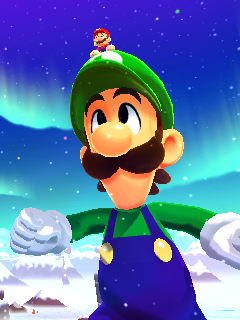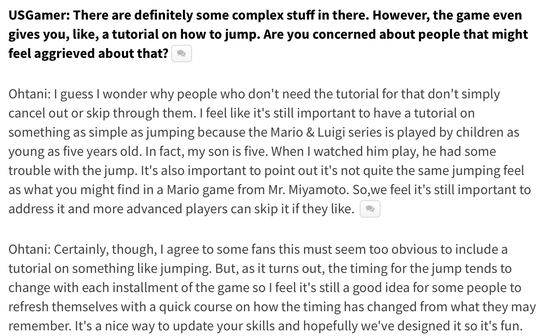Mario and Luigi: Dream Team Bros. – Remaining Thoughts
May 7th, 2018
To close this series of posts on Mario and Luigi: Dream Team Bros., I’ve compiled a few smaller thoughts into this one article. For more on Mario and Luigi: Dream Team Bros., look forward to the (eventual) first issue of Adventures in Games Analysis where I explore how AlphaDream leveraged the 3DS hardware to evolve the Mario and Luigi battle system.
Wiggle Room in Combat Feedback
Depending on how well the player performs an attack, the words “Excellent”, “Great”, “Okay”, or “Miss” will appear on screen as a form of feedback. All “Excellent” Bros attacks net the same amount of damage no matter if the player executes the sequence quickly, slowly, with perfect accuracy, or perhaps with a minor mistake. Given the wiggle room within each bracket, it would have been nice if the damage count more accurately reflected the player’s performance. For example, I always challenge myself to complete Bomb Derby as quickly as possible, yet there’s no difference between a successful slow run and a successful fast run, although the former demands more skill. Tweaking the damage count as suggested would add a barely noticeable layer of complexity to the combat and increase the skill ceiling for more savvy players like myself.
Expert Challenges
Expert challenges are player goals built into the combat system. These optional objectives increase the skill ceiling of the game and provide a means for keeping advanced players more engaged, if indeed they choose to pursue such objectives. On completing each challenge, the player is rewarded with points which lead to special equipment once set tallies are reached.
It’s a fabulous system marred somewhat by an uninspired set of objectives. Of the 111 challenges, 61 involve the player finishing a battle with a particular enemy without getting hit, 34 involve performing excellent attacks either with a particular mechanic or for 10 times in a particular location, and 16 involve dodging 10 enemies in a row in a particular location (full list here).
The objectives blur together under the mantra of “play good”, when perhaps they could have been used to encourage the player to explore more of the design space. Think the Hooraw Beef-off battles where the player is challenged to defeat four bosses under special conditions, but extended to cover the main game. A flashing prompt on the touch screen could inform the player of when such challenges become available. With a quick tap, they could then enter into these alternative battles. Personally, I would find this tailored form of branching difficulty much more attractive than an extra difficulty select where enemy values are arbitrarily increased.
Gyro Prompt
In the pre-attack screen preceding Bros and Luiginary Attacks, the 3DS’s gyro sets the position by which all later gyro movements will be anchored around (much in same way the analog stick is calibrated). The calibration becomes apparent the first time you start one of these attacks while holding your 3DS at an awkward angle, which you must then pivot around for the subsequent sequence. Thus, the pre-attack screen also acts a reminder to hold your 3DS in a neutral position.
Tutorials
Many of the Dream Team Bros. reviews complained about the game’s supposed heavy handed tutorials. Let’s put the number of tutorials into perspective for a moment. The introduction sequence before the Bros. arrive at Mushrise Park features a lot of needless chatter that doesn’t function very well as tutorial or story (the quiz and jumping mini-game come to mind). Afterwards, there’s a few important tutorials on the core mechanics, and then you’re left to your own devices until you acquire the next new ability. With each new mechanic added to the Bros.’s ability set, Starlow spends 1-2 minutes introducing the new move. So across the forty-hour adventure, the player probably has less than an hour of tutorial time, most of which they can skip if they choose. The anti-tutorial sentiment simply doesn’t stand up to basic scrutiny.
Producer Akira Ohtani’s response (responses?) to this interview question bemoaning tutorials in Dream Team Bros. explains the situation well. AlphaDream, as with most developers, want their work to reach as wide an audience as possible and tutorials enable them to cater to players of a variety of ages and skill levels.





 Game Design Companion: A Critical Analysis of Wario Land 4 - $7.99
Game Design Companion: A Critical Analysis of Wario Land 4 - $7.99 Level Design: Processes and Experiences
Level Design: Processes and Experiences Speed Boost: The Hidden Secrets Behind Arcade Racing Design - $5.99
Speed Boost: The Hidden Secrets Behind Arcade Racing Design - $5.99 Adventures in Games Analysis: Volume I - $5.99
Adventures in Games Analysis: Volume I - $5.99







